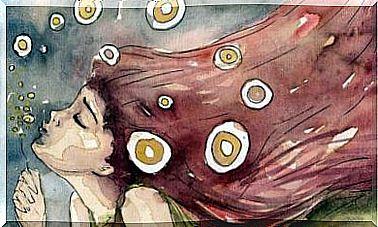Timeless Lesson: The “three Wise Apes” Can Teach Us
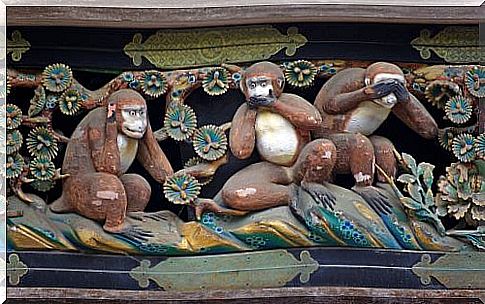
The classic story of the three wise apes from the Toshogu shrine is about a simple and timeless lesson: We need to be careful about what we say, what we hear, and what we see.
The famous shrine is located in Japan. The carvings of the apes – one covering his mouth, another his eyes and the last his ears – date from 1636.
Few images have crossed so many boundaries and survived for as many decades as these. Now the three wise monkeys are an icon.
The significance of this image, however, was slowly lost as time went on.
The Japanese, for example, refer to a philosophical code of conduct on vigilance:
“See no evil, hear no evil, utter no evil.”
This lesson, which comes from the writings of Confucius. For many, it gives a sense of “surrender.”
Historians, however, see a connection between the image of the three apes and Socrates’ three filters.
Thus, this icon can provide a much more useful message for our modern life. This image has nothing to do with the old Eastern submissiveness, which was forced by not seeing or hearing justice.
Socrates’ test can be compared to the three wise apes
To understand the similarity between the three wise apes and Socrates’ three filters, it is useful to first understand a story and a lesson:
A disciple came to inform Socrates that someone had criticized him.
Before the nervous student could even open his mouth, Socrates asked him these three questions. These are three filters that the disciple had to think about before addressing Socrates. They were:
- Truth: Is what you are going to tell really true? Have you checked everything you need to tell me, thoroughly, carefully and with self-control to make sure it’s right?
- Kindness: Is what you are going to tell me good and kind?
- Necessity : Is what you are going to tell me necessary? Is it helpful or necessary to tell me that?
These three filters serve as a guide to help us be more careful, watchful, and critical of everything we say.
Many people believe it is the same story that the three wise apes at the Toshogu shrine tell us. Socrates’ test can thus be compared to the three wise apes.
The three wise apes can teach us that
Let’s take a closer look at the famous picture.
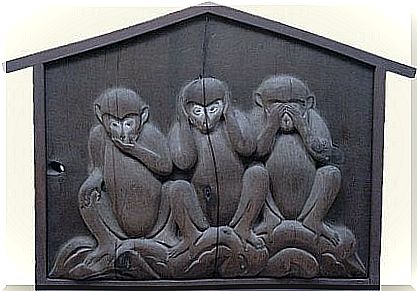
The monkey covering his mouth: Iwazaru
Iwazaru is the little monkey that you can see on the left in the picture.
To the Japanese philosopher , this monkey represents the necessity of not uttering evil things. It is even associated with the recommendation not to express one’s own dissatisfaction or negative feelings.
Caution is also part of not letting our emotional world be shown too much. It is about being grasped and having control over oneself.
In terms of how it fits in with Socrates’ three filters, it has a lot to do with the need not to gossip about others.
This is because rumors are not always true. They are not good and it is not always necessary to say them out loud.
The monkey covering his ears: Kikazaru
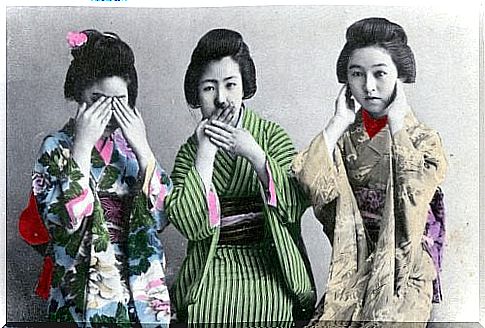
Kikazaru is the monkey in the middle.
In Japan , people who spread rumors, criticism or bad news are viewed very negatively.
Thus, the Japanese believe that it is better to cover its ears for certain kinds of information in order to maintain their balance.
This traditional thought may sound a bit shocking here in the Western world. After all, bad news, gossip and criticism can be found everywhere all the time.
However, if we apply Socrates’ three filters, we can see how it can make sense to us:
- Sometimes we need to get negative information because it is useful information. For example, you tell your boss that customers are not happy and that the boss should work to hold on to them.
However, if the information is not necessary and also harmful, it is time to do as the monkey Kikazaru: Cover your mouth.
The monkey covering his eyes: Mizaru
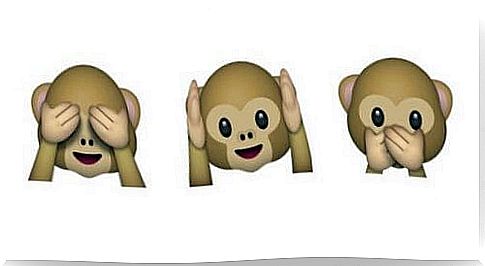
According to the philosophical and moral code santai , it is better not to see, hear or talk about injustice. As we know, however, this does not hold in real life.
However, if we look at the image of the third monkey through Socrates’ filters, we realize something. It is a direct invitation to close our eyes to things that are not useful or good.
Close your eyes to the darkness to focus your gaze on the brighter, more hopeful, and more meaningful.
Overall, these three monkeys teach us about our own needs and about always being careful and watchful, especially when it comes to harmful or negative thoughts.
“Be careful what you say. Cover your ears with everything that is not useful or beneficial, and cover your eyes with all that is harmful and makes you unhappy. ”









